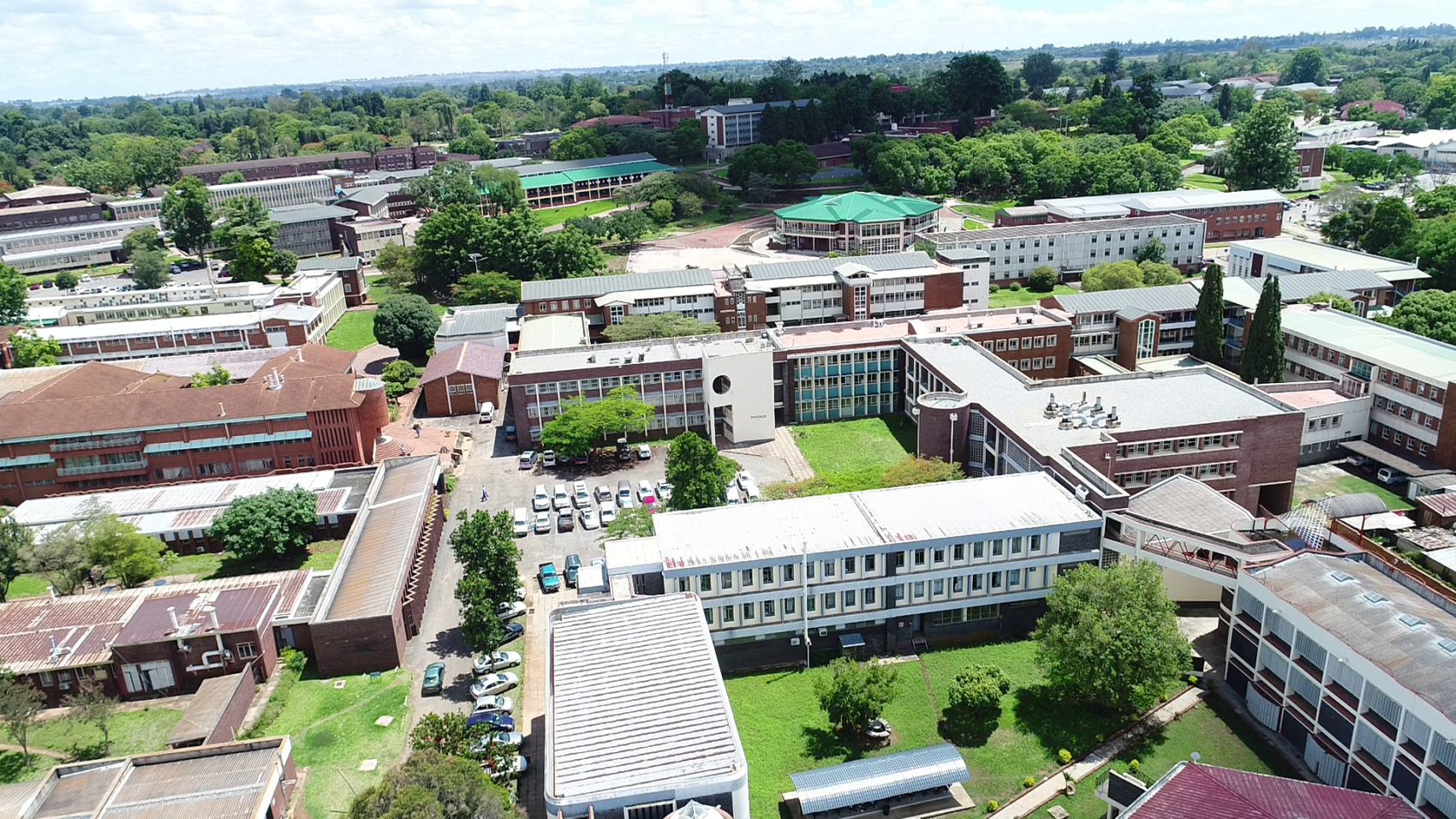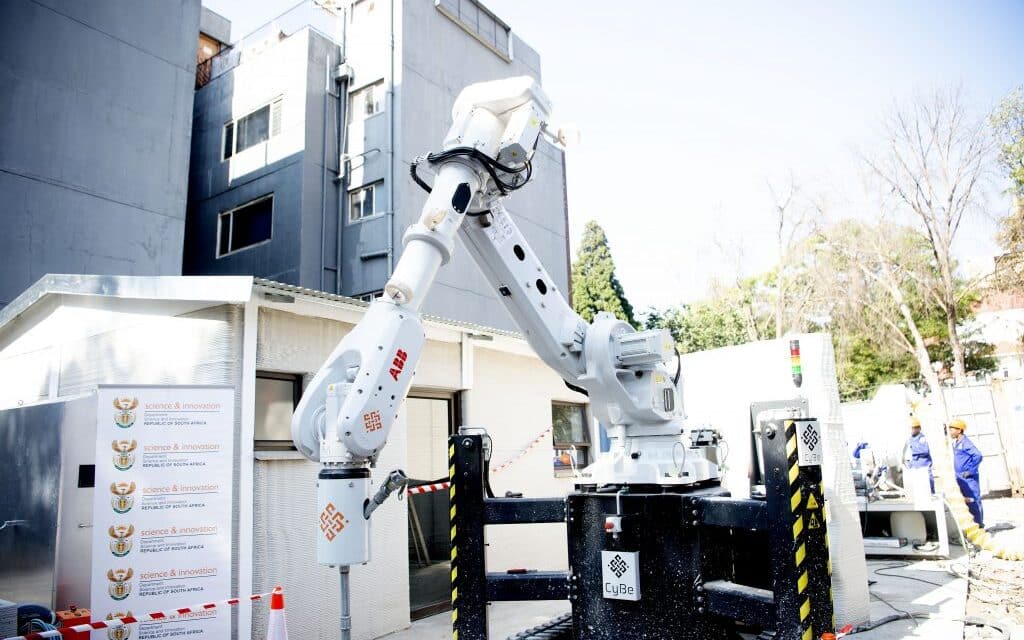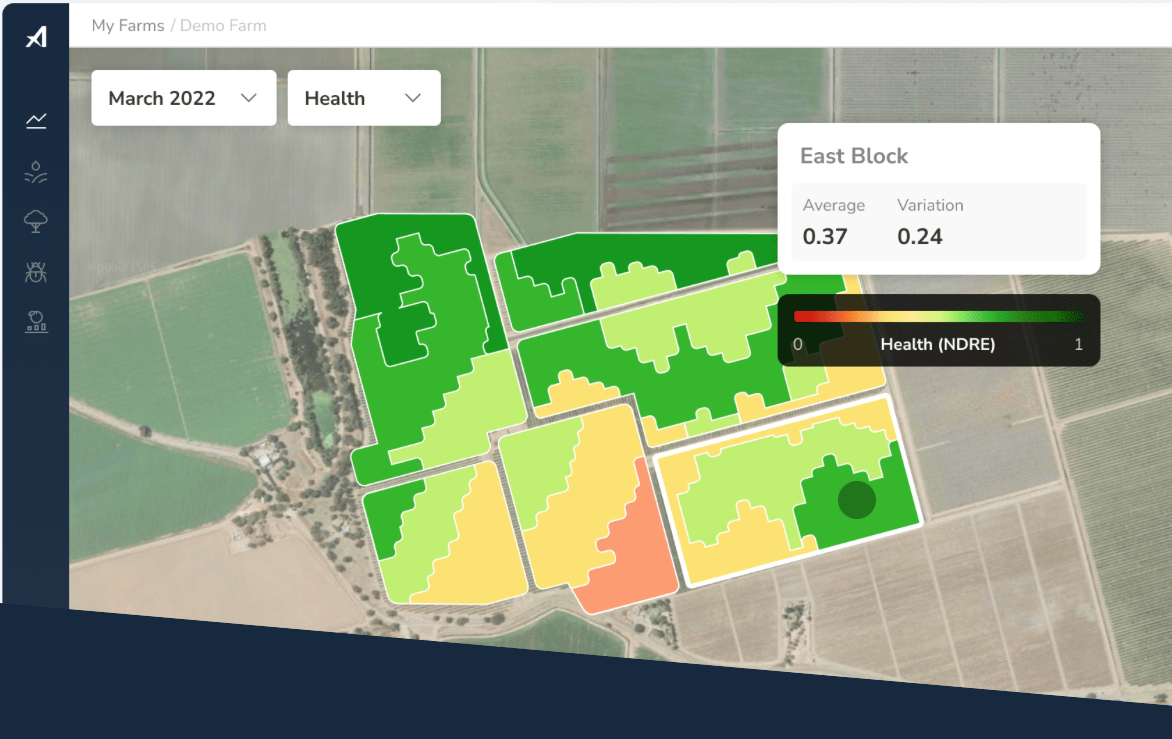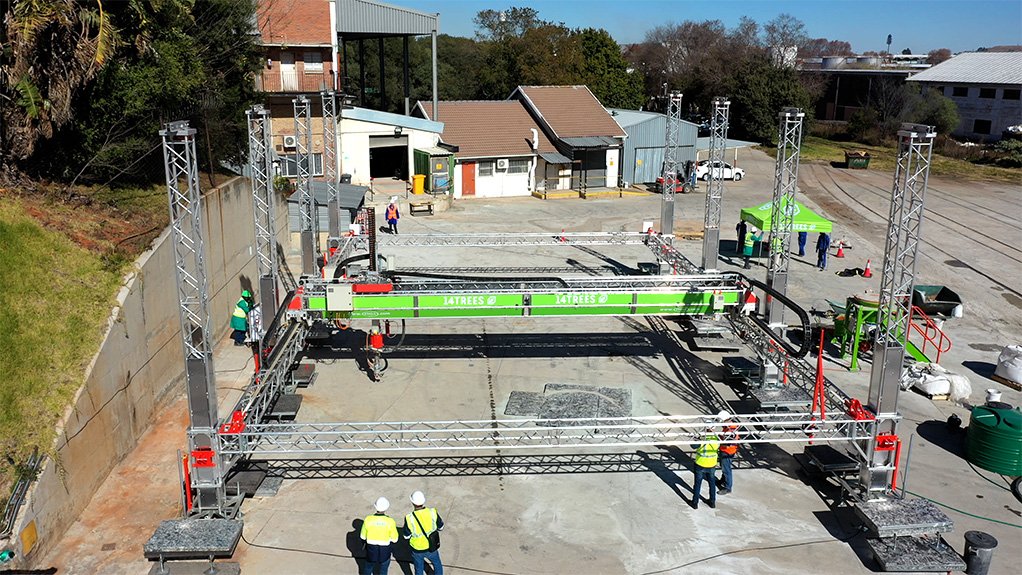Education 5.0 and Zimbabwe's Innovation-Led Future
The University of Zimbabwe is fostering innovation and industrialization through innovation-led initiatives such as agro-industrial parks.
The university is bridging academia and industry to tackle food security and climate challenges and industralise the national economy.
Key Points:
- Zimbabwe is undergoing a profound educational transformation under the banner of Education 5.0, aiming to shift from a knowledge-based to an innovation-led and industrialized economy.
- Zimbabwe aims to become an upper-middle-income economy by 2030 through innovation-led growth.
- Collaboration between universities and industry critical for developing practical solutions.
- The University of Zimbabwe is at the forefront of this change, restructuring its academic programs, establishing innovation hubs and industrial parks, and fostering a culture of entrepreneurship among its students.
- Agro-industrial parks serve as tangible manifestations of Education 5.0, bridging the gap between academia and industry, promoting sustainable agriculture, and creating economic opportunities.

Contents:
- 01. Shaping A New National Economy
- 02. By The Numbers: Zimbabwe's Innovation Drive
- 03. Heritage Based Education 5.0
- 04. Agro-Industrial Parks: Innovation-Led Solutions
- 05. Embracing AI
- 06. A Call To Action: Collaboration for Innovation
Shaping A New National Economy
Zimbabwe has faced significant economic challenges for decades but is now focusing on innovation and industrialization to shape the future of its economy.
At the forefront of this effort is the University of Zimbabwe, which has undergone a radical transformation to align with the country’s development goals. As Prof. Paul Mapfumo, Vice Chancellor of the University of Zimbabwe, states: “The nation of Zimbabwe wants to be a knowledge-driven and innovation-led economy. The role of universities and other higher education institutions is to be at the center of this.”
By the Numbers: Zimbabwe's Innovation Drive
- 2030: The target year for Zimbabwe to achieve upper-middle-income country status.
- 8-9%: The annual productivity growth rate required to reach this goal, highlighting the significant challenge ahead.
- 66%: The share of Zimbabwe’s output generated by the informal sector, emphasizing the need to enhance its productivity and linkages with the formal sector.
- 16+: The number of new industries established within universities and polytechnics, demonstrating the progress made in fostering innovation and industrialization.
- 100+: The number of start-ups founded by students at state universities, showcasing the entrepreneurial spirit ignited by Education 5.0.
Zimbabwe's Economic Challenges
Zimbabwe has struggled with economic instability for years, grappling with high unemployment, currency fluctuations, and reliance on raw commodity exports. To break this cycle, the government has set an ambitious goal of reaching upper-middle-income status by 2030. Achieving this vision requires a dramatic shift toward an innovation-led, knowledge-driven economy.
The country’s vast natural resources, including minerals, agricultural land, and tourist attractions, have not translated into sustained economic growth. This disconnect highlights the need for a new approach that can harness Zimbabwe’s potential and drive sustainable development.
The Heritage-Based Education 5.0 Solution
To drive this transformation, Zimbabwe has adopted the Heritage-Based Education 5.0 philosophy. This approach expands the traditional university focus beyond teaching, research, and community service to include innovation and industrialization. Prof. Mapfumo explains the shift: “The government came up with the Heritage-based Education 5.0 philosophy, which entails five main pillars: teaching, research, community service, innovation, and industrialization.”
Education 5.0 represents a significant departure from the previous model, which often produced graduates ill-equipped for the demands of the job market or entrepreneurship. The new philosophy aims to create a direct link between academic pursuits and economic development.
Key aspects of Education 5.0 include:
- Programmatic Approach: Universities now align their programs with the country’s economic priorities. As Prof. Mapfumo notes, “If agriculture is our economic backbone, then our programs for teaching and learning should speak to that… and our research and innovation should focus on that.”
- Focus on Innovation: Institutions are establishing innovation hubs and industrial parks to commercialize research and foster entrepreneurship.
- Industry Collaboration: Universities are actively seeking partnerships with the private sector to ensure their research addresses real-world challenges.
- Entrepreneurial Mindset: Students are encouraged to think beyond traditional employment and consider starting their own businesses.
- Heritage-Based: The approach leverages Zimbabwe’s natural resources and cultural heritage as a foundation for innovation.
Prof. Mapfumo emphasizes the practical outcomes of this new approach: “We came up with innovation hubs and the development of industrial parks that are run from university-based research and innovation breakthroughs. This would then generate new companies, businesses, industries, and opportunities for communities to drive their own economic activities.”
Agro-Industrial Parks: Bringing Education 5.0 to Life
The University of Zimbabwe’s agro-industrial parks serve as a prime example of Education 5.0 in action. These facilities embody the philosophy’s core principles by bringing together academic research, student innovation, and industry needs to develop practical solutions in the agricultural sector.
Prof. Mapfumo describes the impact: “We’ve started with an agro-industrial park where we are driving innovations based on agriculture, the environment, and of course the science, to drive specific food value chains, notably the production of edible oils. We are now producing bread and confectioneries made from traditional crops like sweet potato, maize, and millets combined with wheat.”
The agro-industrial parks offer several key benefits:
- Commercialization of Research: Academic discoveries can be rapidly prototyped and tested in real-world conditions.
- Skills Development: Students gain hands-on experience working on practical projects, better preparing them for future careers or entrepreneurship.
- Industry Collaboration: Private sector partners can engage directly with researchers and students to solve specific challenges.
- Value Addition: The parks focus on processing and adding value to agricultural products, helping Zimbabwe move up the global value chain.
- Food Security: By developing new crop varieties and processing techniques, the parks contribute to national food security efforts.
- Climate Adaptation: Research conducted in these parks can help develop climate-resilient agricultural practices.
Prof. Mapfumo highlights the broader impact: “Through these innovations, the university generated such an impact for the nation to begin to recognize that universities can make a difference if they are working on the right model of the higher education system.”
Addressing Climate Change and Food Security
The agro-industrial parks play a crucial role in tackling two of Zimbabwe’s most pressing challenges: climate change adaptation and food security. Prof. Mapfumo explains: “The impacts of climate change are very devastating to Africa. They have been for a while already. I think there is now consensus across the globe that climate change is real, and universities in Africa should be the fulcrums for the adaptation potential of nations.”
Key initiatives in this area include:
- Genetic Diversity: Researchers are working to “harness the genetic diversity animals and plants we have on the continent, including livestock and crops, and enhance their adaptation to the environments that are emerging now and in the future.”
- Smart Agriculture: The university is developing and implementing “smart technologies” to improve agricultural productivity and resilience.
- Food Innovation: As Prof. Mapfumo notes, “We have to redefine the tastes and preferences of food on the African continent. This is why gastronomy is important.”
- Technology Integration: The parks are exploring how “Artificial Intelligence and the Internet of Things… can broaden opportunities in the production of food and the promotion of access to high-quality, affordable food by African populations.”
Embracing AI and Technology Solutions
The University of Zimbabwe recognizes that emerging technologies will be critical to future innovation across all sectors. To prepare for this, Prof. Mapfumo explains, “We introduced a whole new faculty of Computer Engineering, Informatics, and Communications. We have focused on creating capacity for embracing those emerging technologies.” This focus on technology extends beyond just computer science, with the university adopting multidisciplinary and multi-institutional approaches to address the complexities of ICT and AI. As Prof. Mapfumo notes, “We embraced ICTs and AI in our design processes as we sought not only to understand but also to advance new research and be part of the advancement of innovation in those areas.”
The university is also adapting its curriculum to meet the challenges of the digital age. “As UZ we are embracing that fact and devising a very strong focus on new methods of delivery, new approaches, and tools for teaching and learning,” says Prof. Mapfumo. This shift is driven by the recognition that traditional teaching methods are no longer sufficient in an era where students have easy access to information. The goal is to ensure graduates are prepared for a rapidly changing technological landscape, equipped not just with theoretical knowledge but with practical skills to apply emerging technologies to real-world challenges.
Prof. Mapfumo emphasizes the importance of this approach: “The students we are going to teach should be able to take on board those changes so that we can manage them from within our institutional processes. We are not going to take AI and IoT literally or at face value, but to be part of that change.” This forward-thinking strategy positions the University of Zimbabwe at the forefront of technological education in Africa, preparing its graduates to lead in the digital economy.
While the Education 5.0 philosophy and initiatives like agro-industrial parks show great promise, they also face significant challenges. Implementing these ambitious programs requires substantial investment in infrastructure and equipment, a particular challenge in a developing economy like Zimbabwe’s. As Prof. Mapfumo acknowledges, “As a university in a developing country, we do have quite a lot of challenges in accessing technologies and new knowledge with respect to some of those issues.”
Another major challenge is the necessary mindset shift. Both students and faculty need to adapt to a more entrepreneurial, innovation-focused approach. This represents a significant departure from traditional academic models, requiring a cultural change within the institution. Prof. Mapfumo highlights this shift: “Our students and graduates are now preoccupied with the idea of having to start their own businesses, which are startups that we’re supporting through the innovation hubs and industrial parks.”
Sustained collaboration with the private sector is crucial but can be challenging to maintain. The university is working to bridge the historical disconnect between academia and industry, a task that requires ongoing effort and mutual understanding. As Prof. Mapfumo explains, “If we are generating the goods and services that enable opportunities for our people to do business, for our young people to become entrepreneurial, then they will connect to the university.”
Finally, universities must ensure that the focus on practical applications doesn’t come at the expense of foundational knowledge. Striking this balance is crucial to producing graduates who are both theoretically grounded and practically skilled.
Despite these challenges, the opportunities are significant. As Prof. Mapfumo notes, “The focus on education allows Zimbabwe to easily become knowledge-driven as an economy, because it’s an educated country.” He sees a bright future for Zimbabwe, driven by a leadership that is pro-education and investing in both higher education and primary and secondary education. “The investment in education in Zimbabwe as signalled by the leadership is also translated into our population. Zimbabwe invests a lot in education. The culture of producing goods and services, and the culture of business is now thriving within our society more than before.”
This focus on education and innovation positions Zimbabwe to potentially leapfrog some developmental stages, leveraging technology to address longstanding challenges and create new opportunities. As Prof. Mapfumo concludes, “Where we are going, if I look at the language that the students are using now, the language that the professors are using in their conduct of research, teaching and learning, and in communities at the individual household level, there’s a huge investment drive in education.” This investment in human capital, coupled with the practical, innovation-focused approach of Education 5.0, provides a strong foundation for Zimbabwe’s future economic growth and development.
A Call to Action: Collaboration for Zimbabwe’s Innovative-Led Future
Realizing Zimbabwe’s innovation-led vision requires sustained collaboration between universities, industry, and government. The private sector can engage with institutions like UZ to co-develop research agendas, provide internship opportunities, and commercialize promising innovations.
In turn, universities must continue to align their programs with national development priorities and industry needs. The Heritage-Based Education 5.0 philosophy provides a strong foundation, but its success depends on active participation from all stakeholders.
Prof. Mapfumo extends an invitation: “The University of Zimbabwe’s transformation has yielded a lot of opportunities for partnerships with industries and with higher education institutions across the globe. It’s now a place to be for those students, faculty and professionals who want progress, believe in innovation and desire to change lives.”
By working together, Zimbabwe can harness its human capital and natural resources to build a thriving, innovation-driven economy. The transformation of institutions like the University of Zimbabwe shows that the country is on the right path – now it’s time to accelerate the journey.
Frequently Asked Questions (FAQ)
Education 5.0 is Zimbabwe's new educational philosophy that expands the traditional university focus to include innovation and industrialization alongside teaching, research, and community service. It aims to create a direct link between academic pursuits and economic development.
Agro-industrial parks bring together academic research, student innovation, and industry needs to develop practical solutions in the agricultural sector. They help commercialize research, develop student skills, foster industry collaboration, add value to agricultural products, enhance food security, and promote climate-resilient practices.
Technology is crucial to Education 5.0. Universities like UZ are introducing new faculties focused on computer engineering and informatics, adopting multidisciplinary approaches to ICT and AI, and adapting curricula to prepare students for a rapidly changing technological landscape.
Key challenges include resource constraints, the need for a mindset shift among students and faculty, maintaining sustained industry collaboration, and balancing practical applications with foundational knowledge.
The private sector can co-develop research agendas with universities, provide internship opportunities, engage in collaborative projects at innovation hubs and industrial parks, and work to commercialize promising innovations developed in academic settings.
Share
Search by Category
Related Stories
Subscribe to the Future of Africa newsletter here.
You will hear once per month directly from African CEOs and international investors shaping the future of sustainable African development.


















